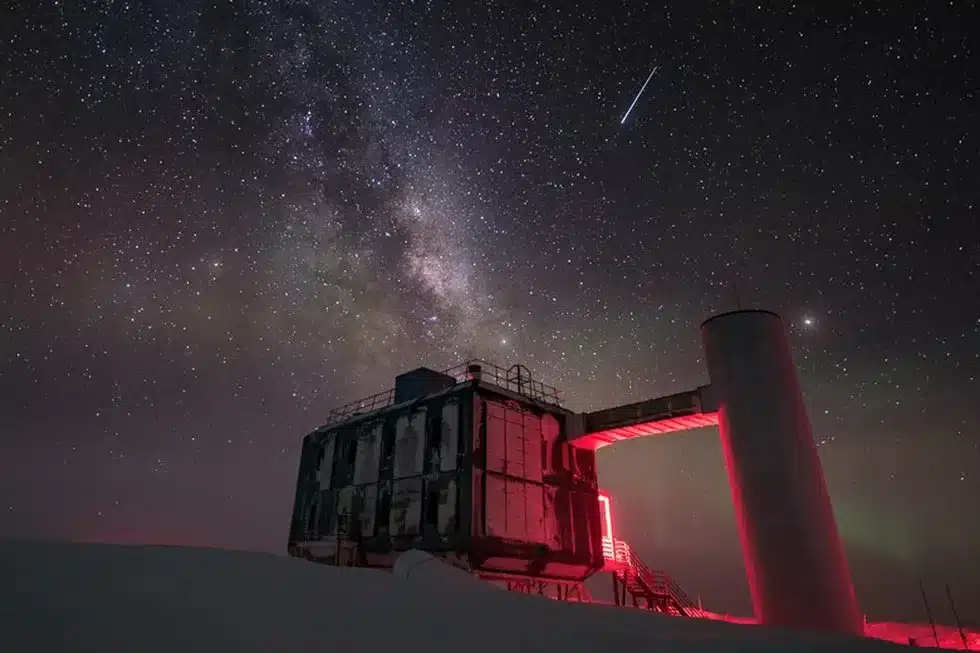About IceCube Neutrino Observatory
- It is a device at the earth’s South Pole that detects subatomic particles called neutrinos.
- It was built and is maintained by the IceCube Collaboration, which consists of many universities worldwide led by the University of Wisconsin, Madison.
- It consists of thousands of sensors buried more than 1.4 km beneath the ice plus multiple detectors above the surface.
- IceCube is the world’s biggest ‘neutrino telescope’; its sensors are distributed throughout a cubic kilometre of ice.
- Working
- When a neutrino interacts with the ice surrounding the sensors, it may produce some charged particles and some radiation.
- The sensors detect the radiation to infer the detection of a neutrino and use the radiation’s properties to understand more about the particle.
- Neutrinos come in different types. IceCube can identify some of them in real-time.
- For others, IceCube collects data for many years and scientists then comb through them to find neutrino interaction events.
Q1) What are Neutrinos?
Neutrinos are mysterious particles, produced copiously in nuclear reactions in the Sun, stars, and elsewhere. They also “oscillate”– meaning that different types of neutrinos change into one another.A neutrino is a fermion that interacts only via weak interaction and gravity.
Source: Astronomers detect seven potential ‘ghost particles’ that passed through planet
Last updated on June, 2025
→ UPSC Notification 2025 was released on 22nd January 2025.
→ UPSC Prelims Result 2025 is out now for the CSE held on 25 May 2025.
→ UPSC Prelims Question Paper 2025 and Unofficial Prelims Answer Key 2025 are available now.
→ UPSC Calendar 2026 is released on 15th May, 2025.
→ The UPSC Vacancy 2025 were released 1129, out of which 979 were for UPSC CSE and remaining 150 are for UPSC IFoS.
→ UPSC Mains 2025 will be conducted on 22nd August 2025.
→ UPSC Prelims 2026 will be conducted on 24th May, 2026 & UPSC Mains 2026 will be conducted on 21st August 2026.
→ The UPSC Selection Process is of 3 stages-Prelims, Mains and Interview.
→ UPSC Result 2024 is released with latest UPSC Marksheet 2024. Check Now!
→ UPSC Toppers List 2024 is released now. Shakti Dubey is UPSC AIR 1 2024 Topper.
→ Also check Best IAS Coaching in Delhi
























